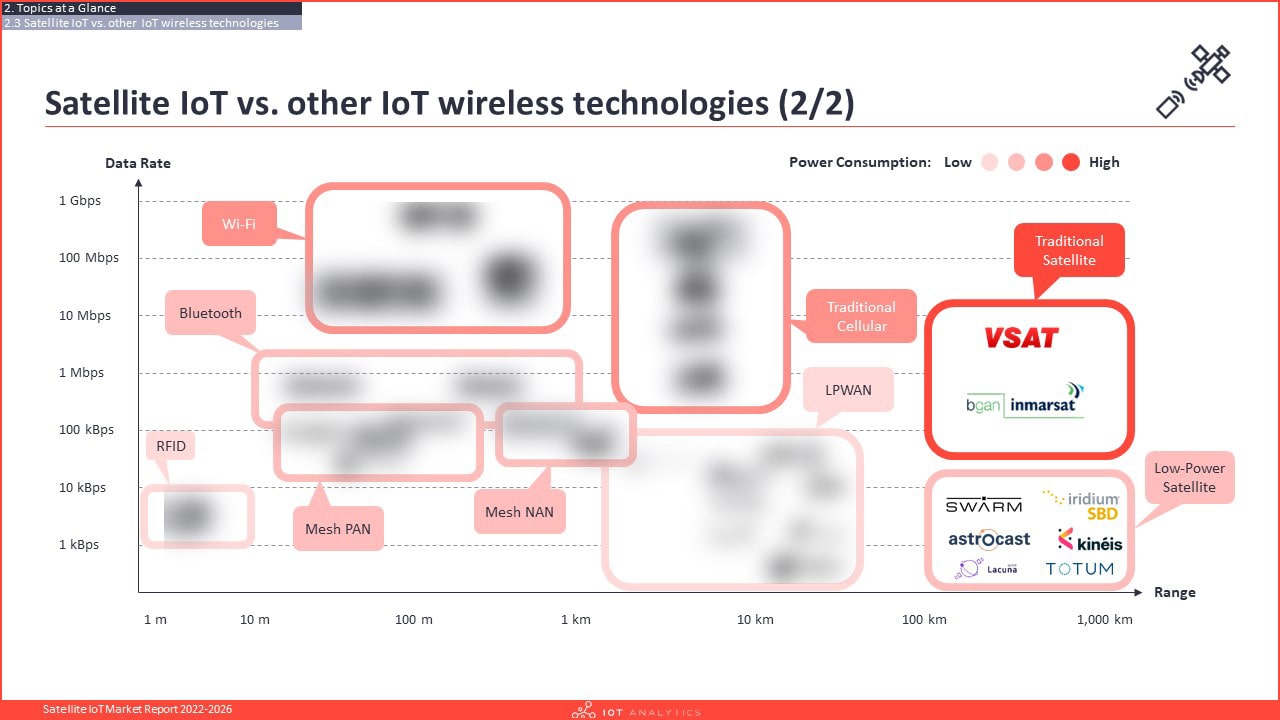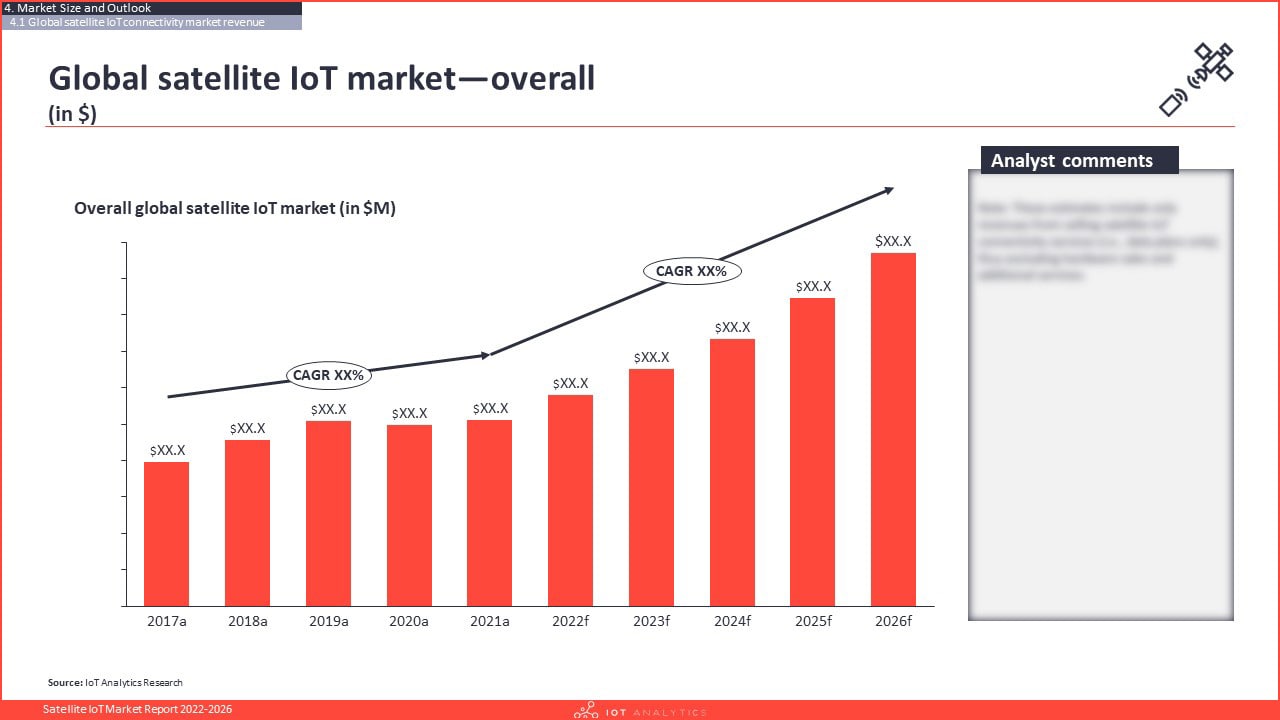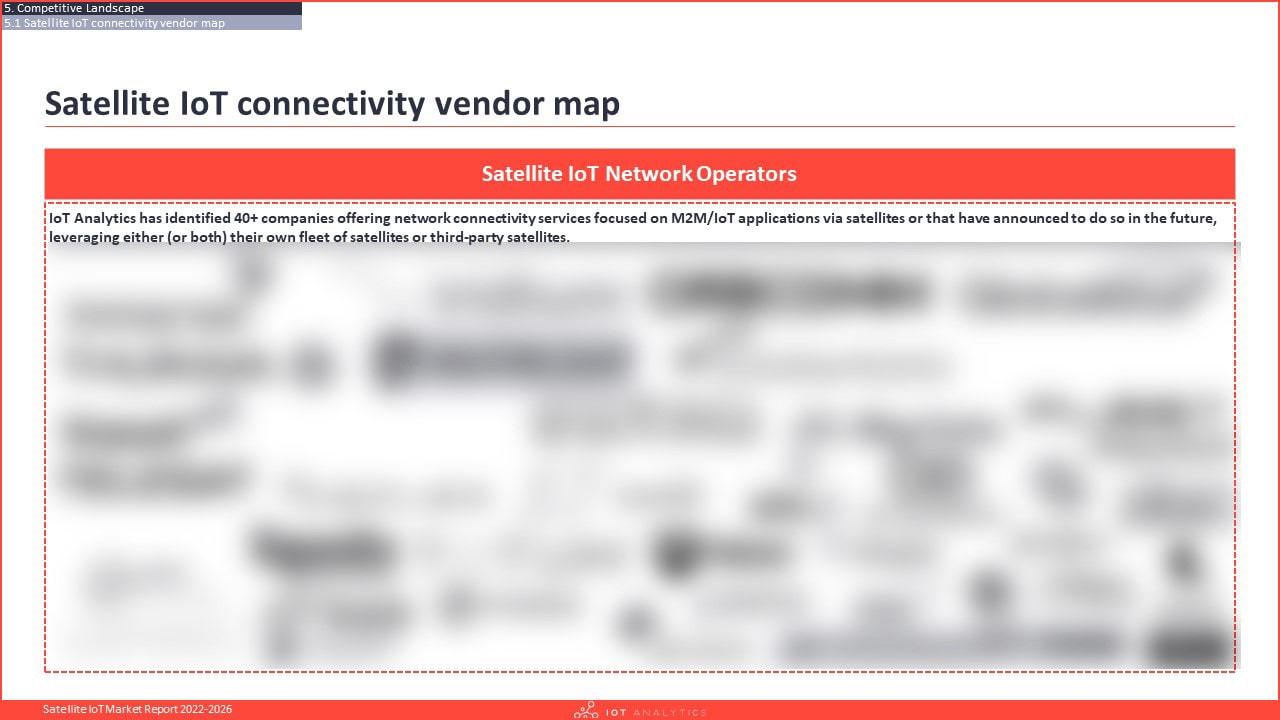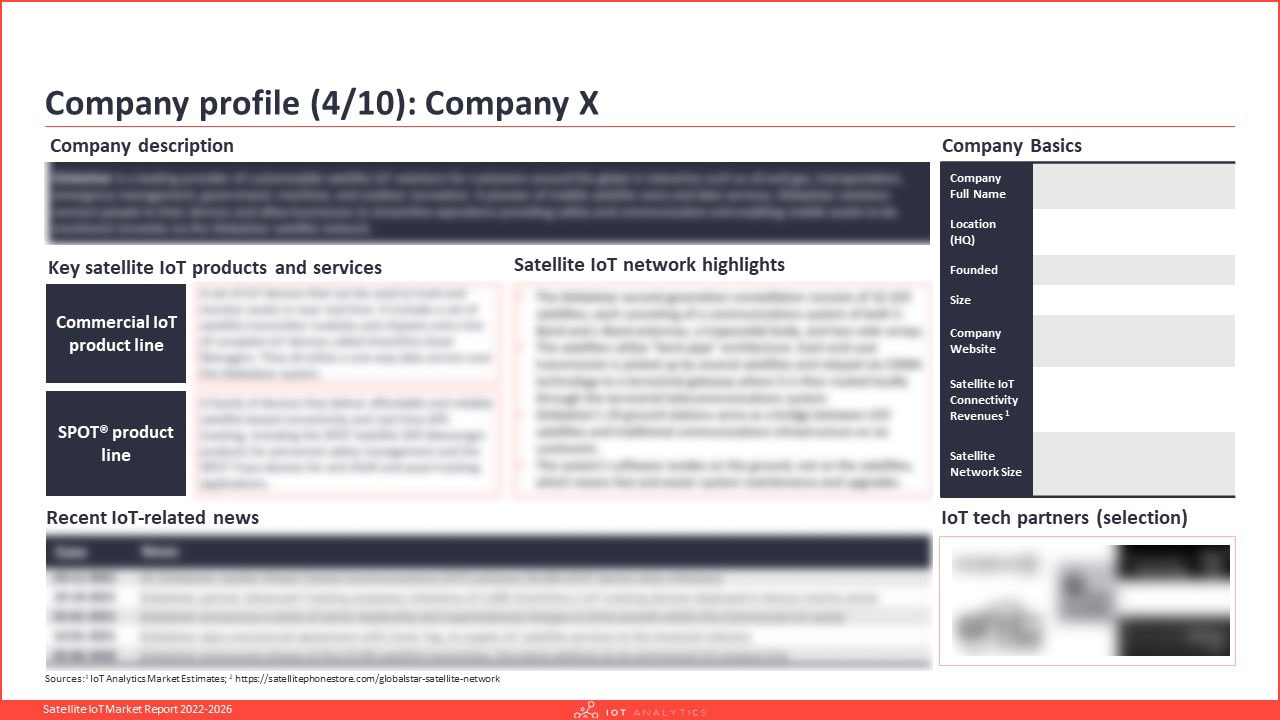Description
Satellite IoT Market Report 2022-2026
Related Reading:
The research blog article “Satellite IoT connectivity: Three key developments to drive the market size beyond $1 billion” is derived from the report.
Find out
- What is satellite IoT connectivity?
- What are the fundamental technical aspects and technologies upon which satellite IoT connectivity products and services are built on?
- How big is the Satellite IoT Connectivity market and how fast is it growing (by region, industry, and technology categories)?
- How big is the current vendor landscape? Who are the main vendors and what are their market shares? Which start-ups are emerging, and what innovations are they bringing to the market?
- What are the key benefits and main drawbacks of satellite IoT connectivity?
- What are the key trends and challenges in the satellite IoT connectivity market?
- What are some examples of successful implementation of satellite IoT connectivity in real-life case studies?
Available pricing plans:
See Terms & Conditions for license details.
Single User License
Market Report Single User License- 1 named user within a particular department and country
- Complete market report in PDF
- Market model data in EXCEL
- Vendor list in EXCEL
- Complete market report in PPT
- 1 hour discussion with the analyst team
Team User License
Market Report Team User License- 1–5 named users within a particular department and country
- Complete market report in PDF
- Market model data in EXCEL
- Vendor list in EXCEL
- Complete market report in PPT
- 1 hour discussion with the analyst team
Enterprise Premium License
Market Report Enterprise Premium User License- All employees of the enterprise based within a specified country
- Complete market report in PDF
- Market model data in EXCEL
- Vendor list in EXCEL
- Complete market report in PPT
- 1 hour discussion with the analyst team
At a glance:
Definition
Satellite IoT refers to the use of satellite communication networks and services to connect terrestrial IoT sensors and IoT end-nodes to a server (e.g. in a public or private cloud), either in conjunction with or as an alternative to terrestrial communication networks.
- Low-power satellite networks are optimized for narrowband, short-burst data transmissions (up to a few kB) from small, battery-operated devices, and address various low-throughput IoT applications such as remote sensor monitoring and asset tracking.
- Traditional satellite networks are mostly designed for broadband IP-based data and voice communication, although they also support lower throughput non-IP IoT/M2M applications. These networks are best suited to providing internet connectivity services to remote areas or mobile assets (e.g. to consumers or industries such as aviation, maritime, and oil & gas), for first responder and emergency communications, and backhauling of local IoT networks with high sensor density.
Selected companies mentioned in the report
| Astrocast | Commsat | EchoStar Mobile | Eutelsat | Fleet Technologies | Fossa Systems |
| Globalstar | Guodian Gaoke | HEAD Aerospace | Inmarsat | Iridium | Kepler Commnucations |
| Kinéis | Kleo Connect | Lacuna Space | Myriota | OQ Technologies | ORBCOMM |
| Sateliot | Skylo Technologies | Thuraya | Totum Labs |
Frequently asked questions (FAQ)
What is satellite IoT?
